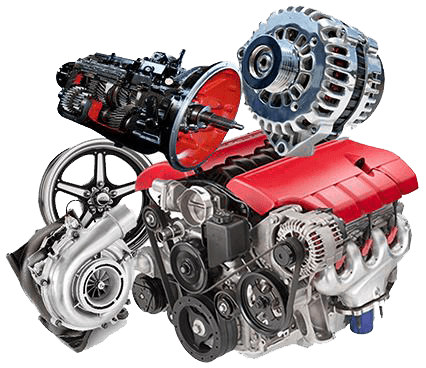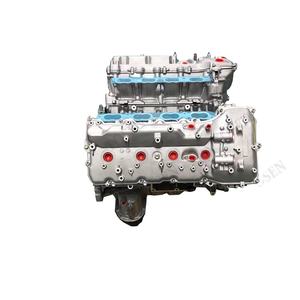Opel Corsa Engine: Common Issues and Just How to Deal with Them
Wiki Article
Discovering the Inner Operation of a Compact Vehicle's Engine System
As chauffeurs, we typically consider granted the detailed procedures that happen within the confines of our lorry's engine system. The small yet complex equipment that pushes us forward is a marvel of engineering precision and control. From the controlled surges in the combustion chamber to the meticulous timing of gas shot, every element plays a vital role in the smooth procedure of the engine. In this exploration of a portable car's engine system, we will certainly decipher the inner workings of this mechanical symphony, shedding light on the secrets that drive us forward on our everyday trips.Combustion Refine Overview
The combustion procedure in a portable vehicle's engine system is an important mechanism that efficiently converts fuel right into energy to power the automobile. This procedure occurs within the combustion chamber of the engine, where fuel and air mix, stir up, and produce controlled explosions. The burning procedure is composed of four major stages: intake, compression, exhaust, and power.Throughout the intake phase, the piston moves downward, pulling in a mixture of air and gas into the burning chamber. The next phase, compression, involves the piston moving upwards, pressing the air-fuel mixture to raise its strength. Subsequently, in the power stage, the ignition system sparks the pressed mix, causing a rapid growth of gases that compels the piston back down. This down movement produces the power required to drive the car. In the exhaust phase, the burned gases are gotten rid of from the burning chamber through the exhaust valve, preparing the chamber for the next cycle. This cyclic combustion procedure is fundamental to the operation of a compact vehicle's engine system, guaranteeing reliable power conversion for propulsion.
Piston and Cyndrical Tube Communication

The piston's accurate fit within the cylinder is vital for preserving optimal compression and protecting against energy loss during combustion. Limited clearances in between the piston and cyndrical tube wall surfaces make certain effective securing, enabling the piston to move smoothly without allowing gases to leak past. Appropriate lubrication is likewise important to minimize friction and wear in between these parts, boosting durability and performance.
Additionally, the design and materials read what he said used in manufacturing the piston and cyndrical tube influence engine effectiveness and longevity. Modern engines usually utilize lightweight yet resilient products like light weight aluminum alloys for pistons and cylinder linings to reduce inertia and enhance thermal effectiveness. In general, the unified interaction in between the piston and cyndrical tube is fundamental to the engine's performance and total performance.
Fuel Shot System Capability
Fuel injection systems in portable automobile engines play a crucial duty in precisely providing fuel to the combustion chamber for efficient and regulated ignition. The fuel shot system works by injecting gas into the burning chamber at the optimal minute during the engine's procedure (opel corsa engine). This accurate timing ensures that the gas mixes equally with the air for proper burning, leading to enhanced fuel performance and lowered check dischargesThere are primarily two sorts of fuel shot systems made use of in small lorry engines: port fuel shot (PFI) and direct fuel injection (DFI) PFI systems inject gas into the intake port prior to the intake valve, while see here now DFI systems inject gas directly right into the burning chamber. Both systems have their advantages, with DFI using better fuel atomization and PFI providing an extra affordable solution.
Comprehending Engine Cooling Systems
Efficient procedure of a portable lorry's engine relies greatly on the efficiency of its cooling systems. The cooling system in a portable automobile normally is composed of a number of components functioning together to regulate the engine temperature. Comprehending these engine cooling mechanisms is vital for maintaining the performance and long life of a small lorry's engine system.
Exhaust System Parts Explained
The ideal performance of a small vehicle's engine cooling devices depends on a complementary system recognized as the exhaust system, which makes up numerous vital elements for ensuring effective emissions and engine performance. The exhaust manifold collects exhaust gases from the engine's cyndrical tubes and paths them to the catalytic converter.One vital component of the exhaust system is the oxygen sensor, which keeps track of the oxygen levels in the exhaust gases to aid regulate fuel intake and ensure ideal engine efficiency. opel corsa engine. Additionally, the resonator may exist in some exhaust systems to lower noise degrees. Overall, the exhaust system plays an important function in keeping engine efficiency, decreasing dangerous exhausts, and ensuring a quieter driving experience for small lorry owners

Conclusion
To conclude, the small lorry's engine system is a complex combination of components that interact to promote the burning process, convert fuel right into power, and expel waste gases. Comprehending the internal operations of the engine system, consisting of the piston and cyndrical tube interaction, fuel injection system, engine cooling mechanisms, and exhaust system components, is important for preserving optimum performance and effectiveness of the car.The combustion process in a small automobile's engine system is an essential device that efficiently converts gas right into power to power the automobile.Gas injection systems in small car engines play a crucial function in exactly providing gas to the burning chamber for effective and controlled ignition.There are primarily 2 kinds of gas shot systems used in small car engines: port fuel injection (PFI) and straight fuel injection (DFI) Recognizing these engine air conditioning systems is important for maintaining the efficiency and long life of a portable automobile's engine system.
The ideal functioning of a compact lorry's engine air conditioning devices depends on a corresponding system known as the exhaust system, which comprises numerous crucial elements for guaranteeing efficient exhausts and engine efficiency.
Report this wiki page